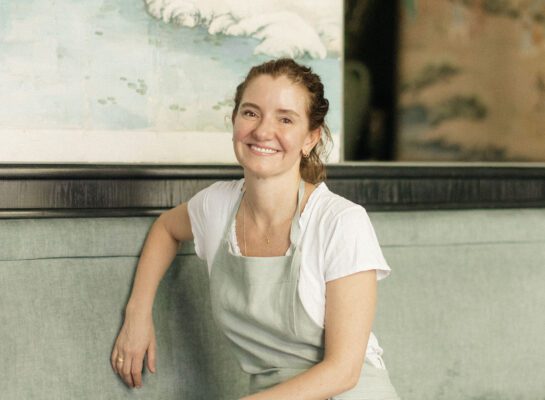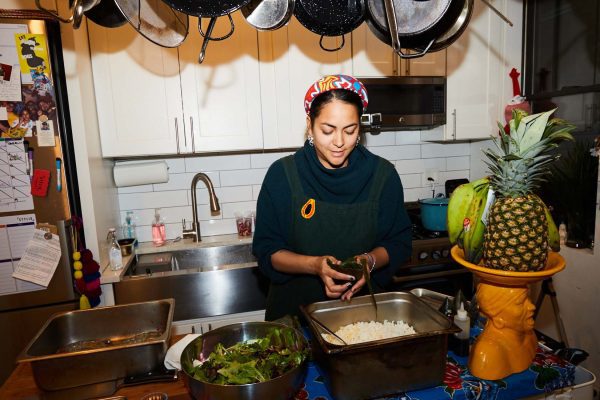
COFFEE WITH
DEBORA FADUL: “WE’RE NOT TRYING TO BE ANYTHING OTHER THAN OURSELVES”
Name: Debora Fadul
Profession: Chef, Diacá
Nationality: Guatemalan
Zodiac sign: Gemini
Instagram: @debora_fadul
LATINNESS: Debora, it’s lunch time and we’re entering Diacá. What’s cooking on your stove? Can you help us imagine what we’re going to eat, where it comes from and what impact it has? What do you hope your customers take away after visiting?
DEBORA: Yes, of course. The truth is that the first thing that’ll receive you are the aromas. They’re welcoming, as we like to say.
While the settings inside the restaurant aren’t actually designed to impress, my husband always tells me that it resembles a nest and I’m like a little bird. Wherever I go, I grab certain elements– especially when I visit producers, or when I’m on the farms, or when I have some contact with someone who works the land. I always ask: can I take this seed with me?
We have certain altars that draw your attention, as well as books that talk about what you can find in America. We try to count the continent as land and not just refer to Guatemala because our message is to unite what represents America.
So you’re going to find aromas from here and there that embrace you along with greetings from my team because everyone is attentive to who comes in and who goes out, they guide you and will make you feel at home.
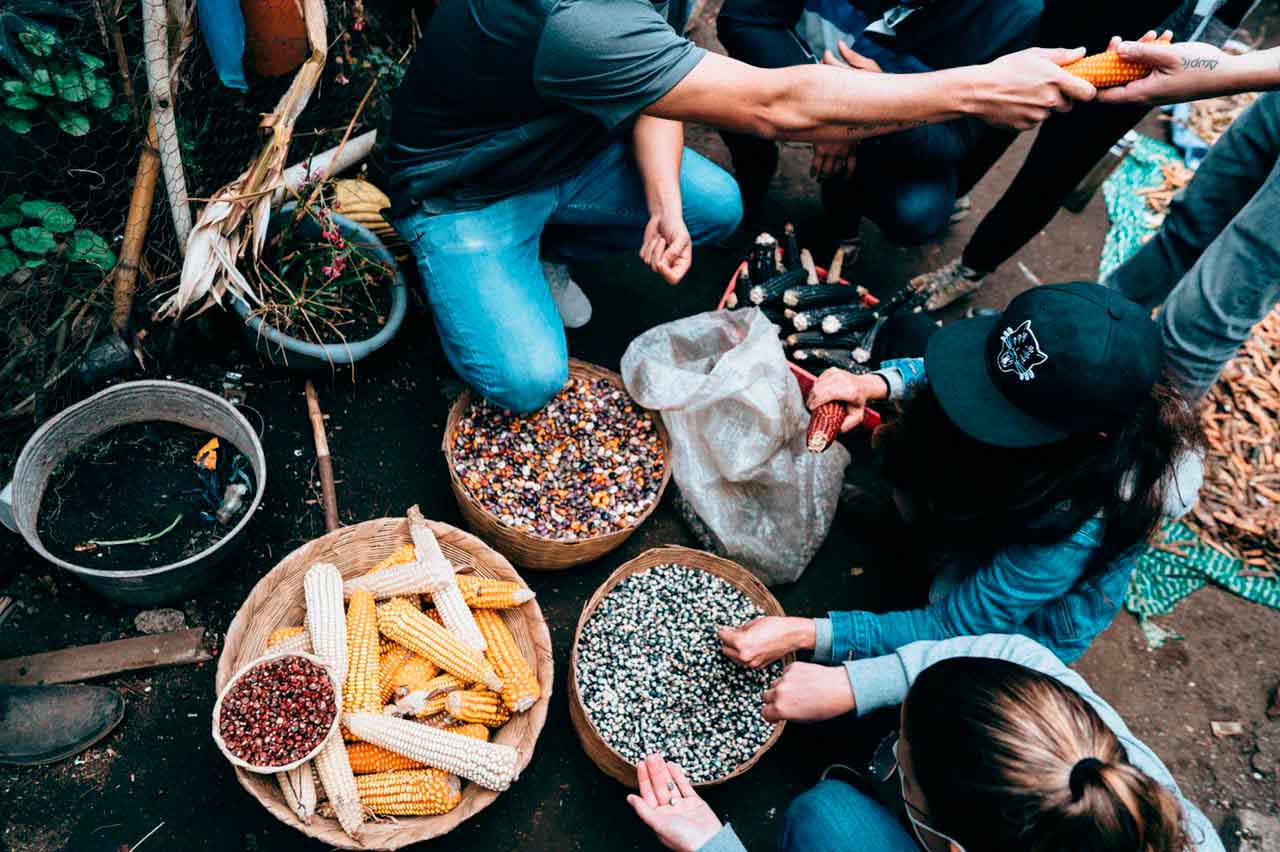
LATINNESS: Delicious! We always like to start at the beginning. How did you get to where you are now?
DEBORA: To summarize a long and ongoing story, this year we celebrate our 15th anniversary. I started at the age of 21 with a desire and drive to want to know the reason behind everything, the reason why we eat, why we exist, why we feel what we feel when we eat, where it leads us, and why it’s important.
It basically started with a question I asked myself: what’s my role? What’s the role of a cook in the community? What do I eat and what role does it have where I live? I had understand my role because they really raised me to think that we don’t just come here to consume, but also to contribute.
Eventually, I started to question what I did not want to do and what I did, and I began to build the company. I started a catering business with this as a base that I had for ten years. I created it by listening to the consumer. I didn’t offer a set menu, but rather interviewed each client, and would look at how they spoke, how they dressed, what they liked, and then created the menu. In this way, the client always took away something very personal and intimate.
That’s when I realized that the world really needed human intimacy and a closeness and empathy that we’ve lost along the way.
Some time ago an anthropologist was asked how she had concluded that the human being was a living being in constant evolution and how she had known that it’s the only animal that constantly evolves mentally, spiritually and physically. She returned the question to her audience, and they guessed: “perhaps because they found a pot and saw that there was a kitchen”, “because they knew how to make a fire”. Several responses were offered.
She then said: “when they found a broken bone that had healed”. That would never have happened in an animal, she commented, because when its leg breaks, a predator will arrive and eat it. The human being is empathic– the healed broken bone means someone took care of that person or took them to a safe place to heal.
This made me realize that we were doing the kitchen value chain completely backwards with the human being putting himself at the center and wanting only for himself. He wasn’t realizing that it’s a win-win relationship, both parts with nature.
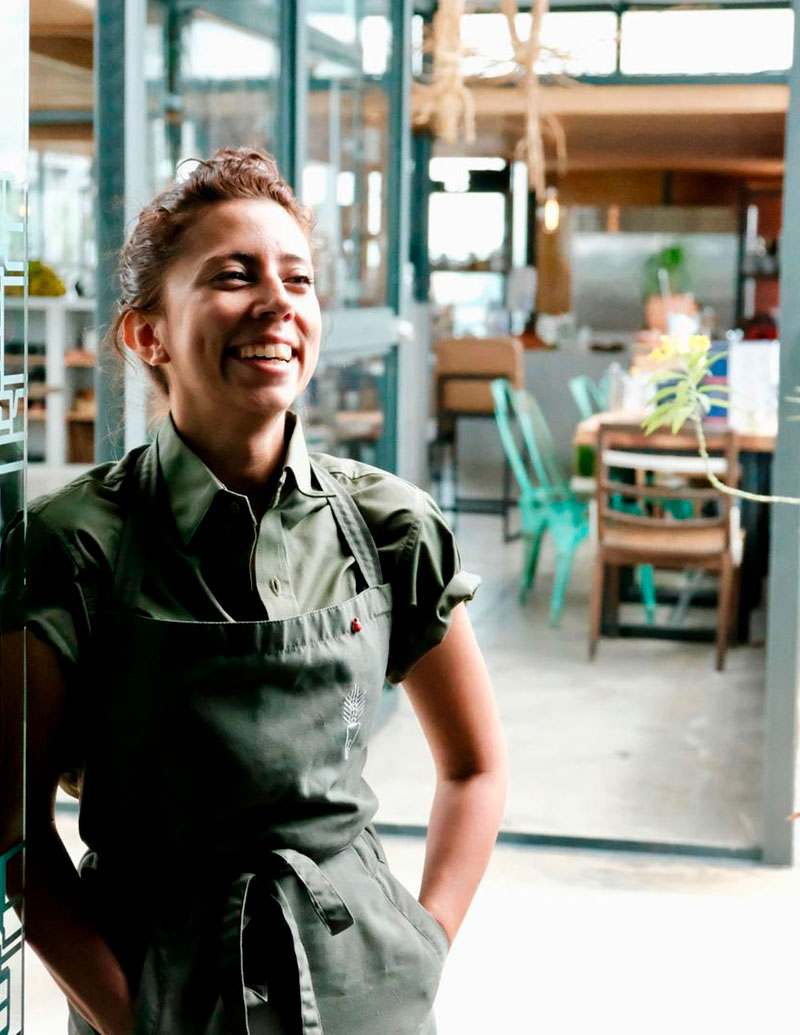
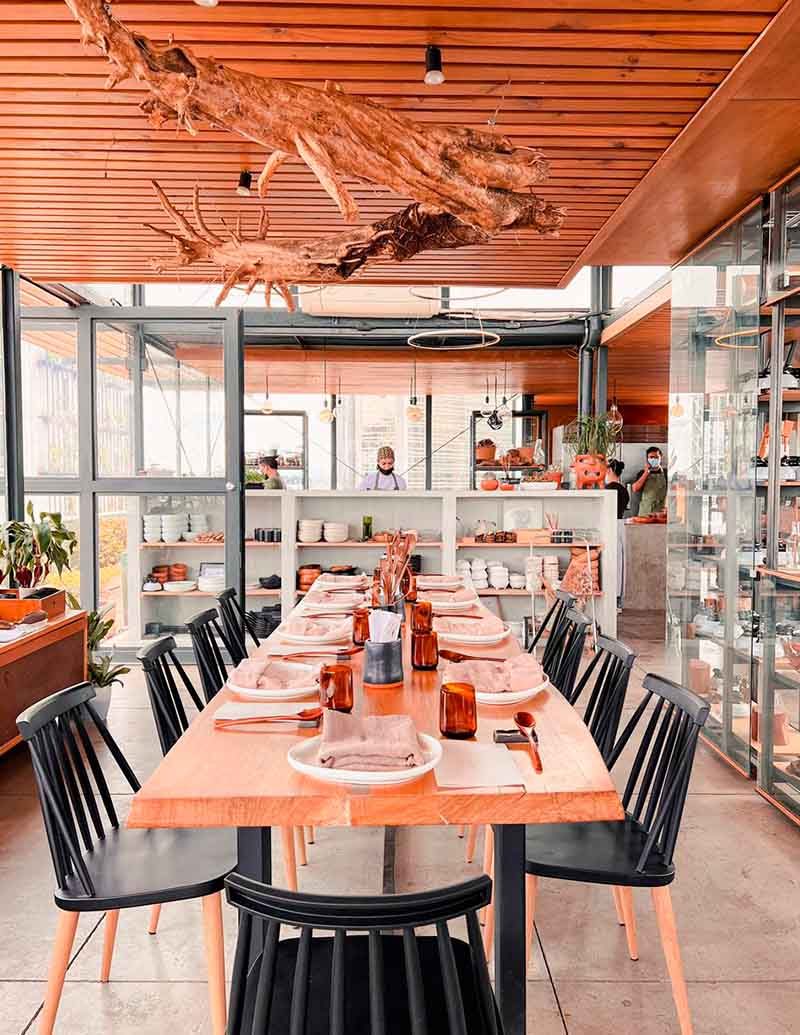
LATINNESS: What did you do with this discovery?
DEBORA: Little by little I began realizing the disconnection from where we were standing and how important it was to talk about it. When we turned 10, I set out on a mission to turn it into a restaurant, Diacá, and make it much more intimate and direct, to compose all these things, working as a team, with producers, biologists, anthropologists, archaeologists, agro-ecologists and farmers, and thus come to the conclusion that we need each other and not only the cook should be the center of attention.
I wanted to turn it into a communication channel through which we tell what happens on the side of nature, and transfer that message to the consumer. This snowballed, allowing us to grow until we were 15 years old.
When I had the catering company, they’d ask me: “do you take photos?”, and I answered: “Yes, yes, we take photos”. “Do you teach?”, and I answered: “Yes, yes, I teach”… I said yes to everything. It became something where we could cover various things, both with the company and with Diacá. The restaurant looks for that a lot– how to help the producer while at the same time serving the consumer, and it’s been a very nice evolution.
I’ve had opportunities that I never thought I’d have in life, and they’ve arrived because it’s been woven in a way that involves everyone and not just me. And so, here we are.

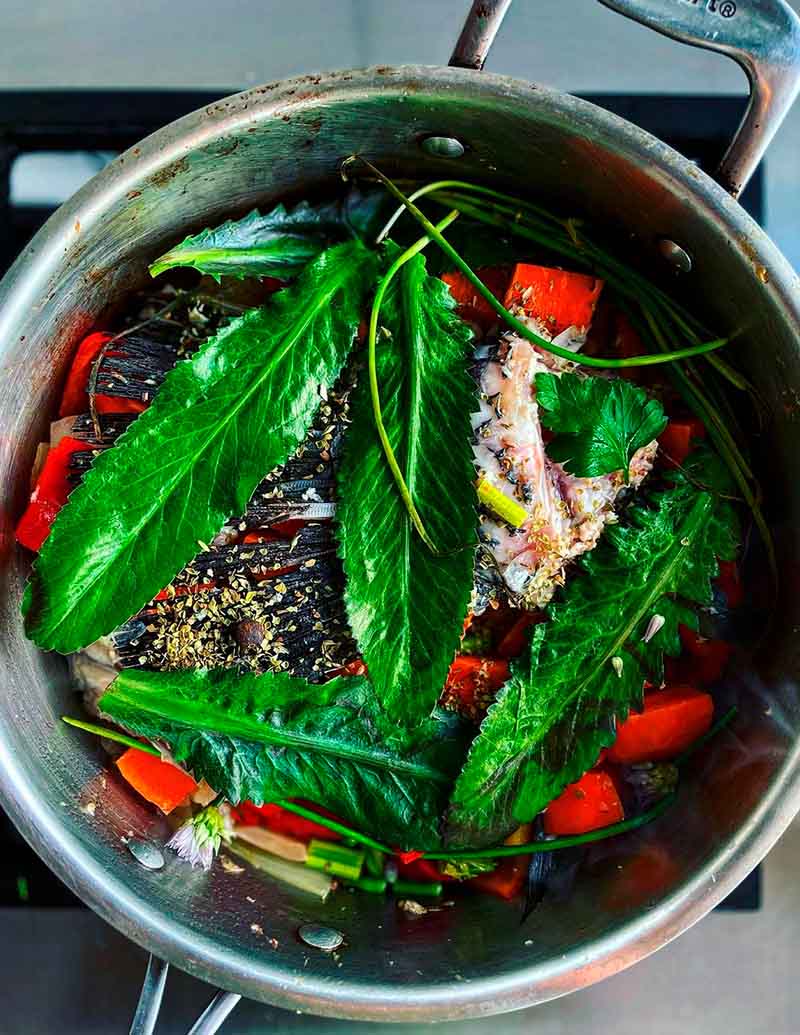
LATINNESS: What was your initial investment like?
DEBORA: I started the company at the age of 21 with approximately 70 USD. Without loans from banks or parents or a boyfriend, it’s been like that to this day– an effort by its sole owner and the team.
Almost 100% of what we’ve done has been invested in a smart and sustainable way for the restaurant, for the people who work there, for the producers and for me. There is no sustainability if it’s not regenerative.


LATINNESS: You recently won the prestigious Fifty Next award, which named you as “The cook flying the flag for innovative Guatemalan gastronomy”. What does this achievement mean for your mission, your restaurant and Guatemalan cuisine in general?
DEBORA: I don’t know how to really take it in. It’s not something I focus my career on. My path is not directed towards prizes or recognitions, but rather I’m oriented to see visible changes that are reflected in the community.
During the pandemic, a very clear example was with one of the boys from whom we bought the wooden boxes used for deliveries. He started with one location, and after the pandemic, it grew to almost four. That’s a spectacular achievement and it impacts me.
When I see recognitions like these, I don’t measure how far the work we’re doing here can go. I’m thankful with all my heart and I simply realize that these are things that at the time were thought impossible.
In Central America it was thought impossible because it hadn’t happened before, only with Mario (Castrellón) in Panama. It’s nice to see that it’s no longer impossible for this kind of thing to happen for a woman. The people outside look at it like “wow”, they don’t understand how big it is, and I just don’t assimilate it, I can’t assimilate how big it can be or become, I just appreciate it.
I’m very excited about the achievement of Fifty Next, and I didn’t see it as Debora Fadul, but as Guatemala, because the award was “examples in hospitality” and it’s like “wow”. That was huge, because I said: “How incredible that they’ve put Guatemala, not Debora Fadul, as an example in hospitality for the rest of the world”. Because yes, Guatemala is an example in hospitality.
When you come to this country, people will always tell you that they’ve never found service like here because it’s very warm. Everyone wants to receive you, everyone wants to see where they take you, how to please you. And it’s not to look good, it’s just something that identifies us a lot. No matter where you go, what part of Guatemala or the capital, wherever, we all stop doing our thing to serve people we meet that day.
The awards that’ve been given, for which I’m thankful for with all my heart, have been more about how great the work that’s being done can be seen from other parts of the world.
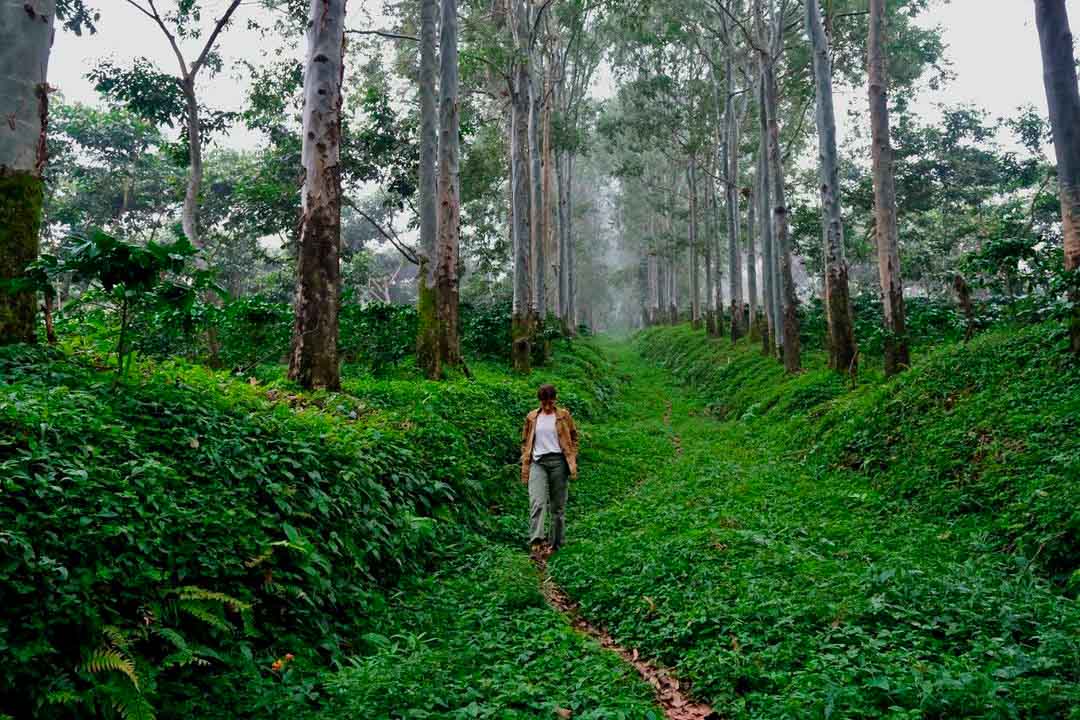
LATINNESS: To what do you attribute this recognition?
DEBORA: Because we’re not trying to be anything other than ourselves. That’s the message I want to be seen quite strongly because, in my case, I never left Guatemala; I always wanted to immerse myself as much as possible in learning about my country.
Most chefs first graduate and then go to work abroad. When you read my biography, you won’t see that I’ve worked in places other than on my own project and in Guatemala, learning from the producers.
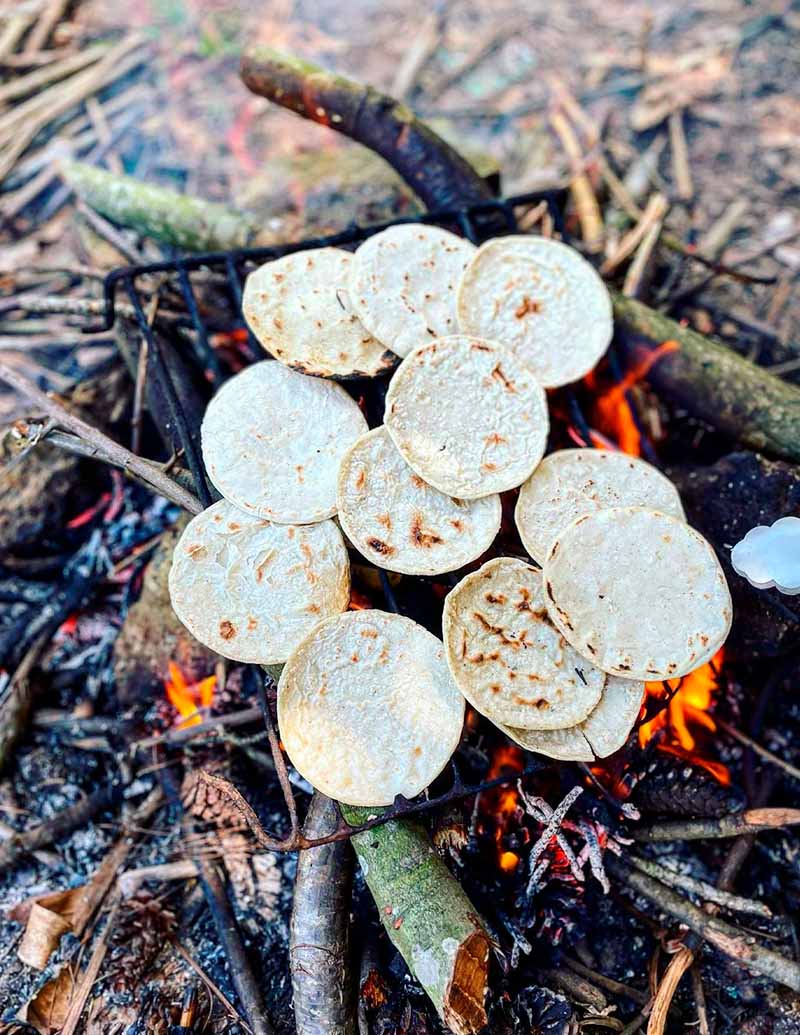
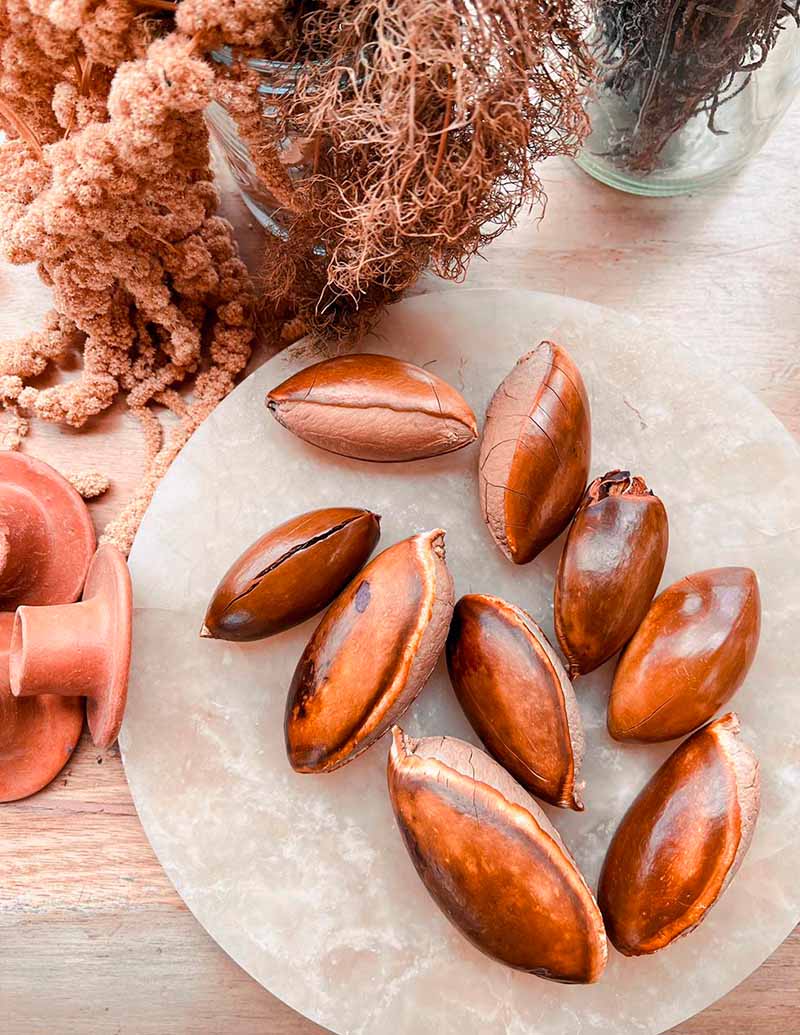
LATINNESS: What a great message.
DEBORA: It’s also very nice that this message reaches the Latin community, because not all of them have the opportunity to go abroad or even study in super-top schools; most end up in kitchens out of necessity.
I’d love for them to see that it’s possible to achieve this type of thing without having to go abroad, looking for the same thing as everyone else, but rather creating your own formula with what you have at hand.
That’s what these achievements allow: sending those messages to people who don’t have the opportunity to go abroad. That you can do it as long as you’re true to what you think and then know how to communicate it.
LATINNESS: Speaking of that, what’s your philosophy on the kitchen as a social movement?
DEBORA: Respect. And I’ve seen it a lot. I think that very few of us have a notion of what this word that encompasses so much means, right? We always say that the philosophy is: “you respect yourself, you respect others”, but it also includes what you’re touching, the person who dedicated so much time to that ingredient, the location and the tradition.
At the same time, you want to change and evolve, which you can do as long as there is respect and awareness. Our philosophy goes hand in hand with being constantly grateful because we feel the respect and the awareness of really knowing where cooking begins. At the end of the day, cooking doesn’t start in the kitchen, it starts from a seed that was sown.
There’s something we often don’t have in mind when we go out to eat, and once we understand it, we’ll know with whom we want to share that privacy. Eating is something super intimate, a process so intimate with yourself that you wouldn’t want to give it to just anyone.
I tell my clients this so they understand that chefs have an enormous responsibility to handle food that’s going to be inside the bodies of those who sit down to eat with us. By understanding this, you know that everything, absolutely everything, that your hands touch, has to be done with the utmost respect and with intentionality, and it’s the intention that you put into things that develop inside the bodies of others.
I believe a lot in energy– in energy and in the intention you give to food. If it’s just to get attention, the client will feel it way, even if you aren’t aware of it yourself.
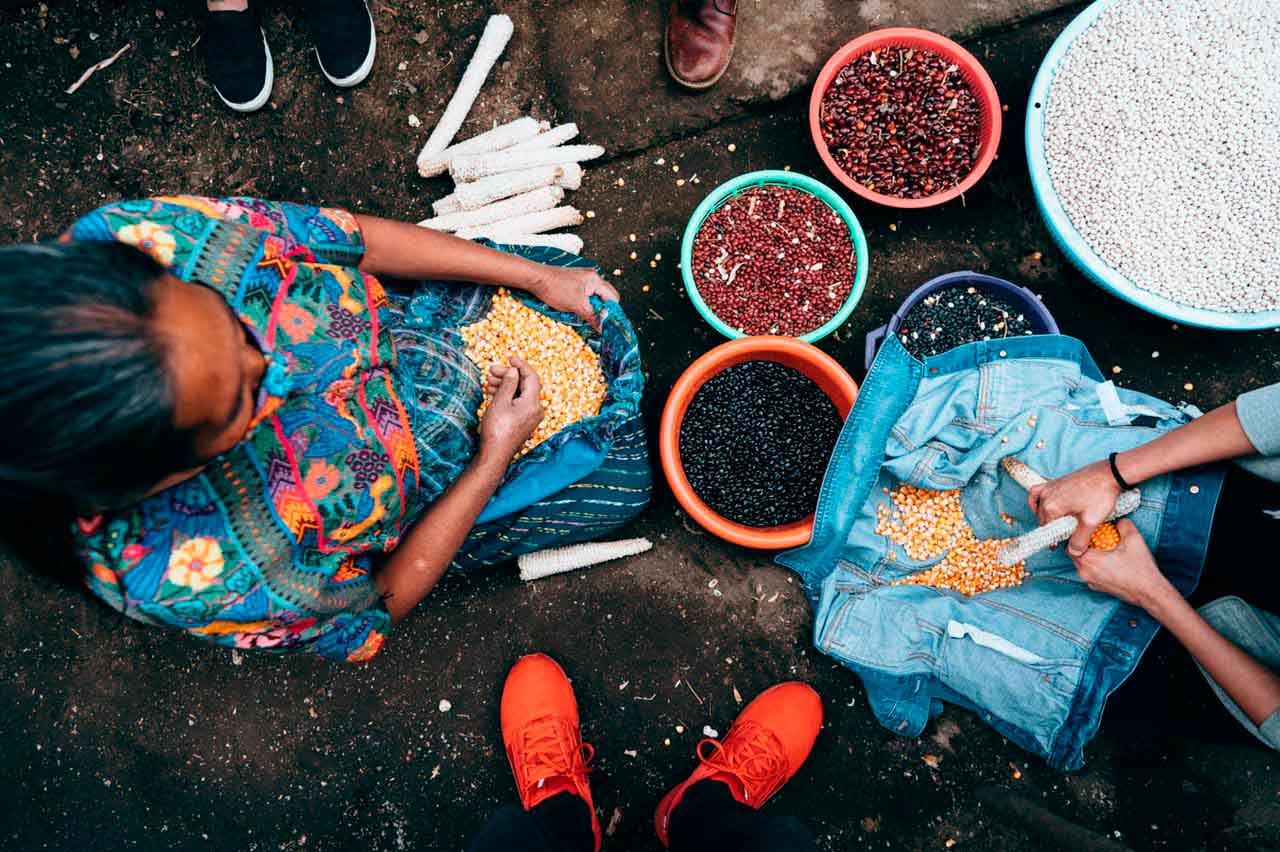
LATINNESS: It reminds us a lot of a Colombian chef we interviewed who said something similar about the intimacy of eating. He said that in no profession in the world is one given the opportunity and confidence to open someone’s mouth so quickly.
DEBORA: Exactly. The philosophy behind what we do is respect because we’re touching the most intimate part of the human being, which is his stomach. This is connected to his thoughts, and at the end of the day, this will manipulate his decisions. So, what food do you want to give your client? Is it something vague, vain or do you want to give him something that really moves his three entities: his spirit, his mind and his physique.
When you understand that part, you discern that you don’t want to put oil that’s been reused for three days into a body because you understand that it can cause harm. That’s something they taught me at home. My dad used to say “Even if they can’t see it, they’ll know you’re doing it wrong”. That’s the awareness I try to instill in the kitchen.
It’s nice to see that when I’m not there, it works exactly the same. When hiring people, I don’t do it for the resume. Sorry for the expression, but I couldn’t care less if you’ve worked at “fufu” restaurants, if when I meet you I can tell that your intention and your being are not willing to listen or learn. I’m not asking that they arrive thinking like me, but at least want to learn and are open to changing this chip that’s been put into our heads– this idea that cooking and being a chef means being a rockstar, when it’s not, right?
At the end of the day, you’re a service; you’re there to serve. For this reason, I hire people who are in the same energetic tune with what we do in the restaurant because you can teach anyone to cook, but to be a good person, well that’s like being born again.
LATINNESS: It’s a strong point. You often don’t think about these things when you sit at the table.
DEBORA: Imagine! You spend years inside that vehicle. There is no other place where you’re going to be living. You can have your house and your car, but, at the end of the day, you live inside your body, in this physical matter.
The example I give my clients is: why do they look for and pay for the best gasoline for their cars, but not for their bodies? How you move is with your body, not in your car.
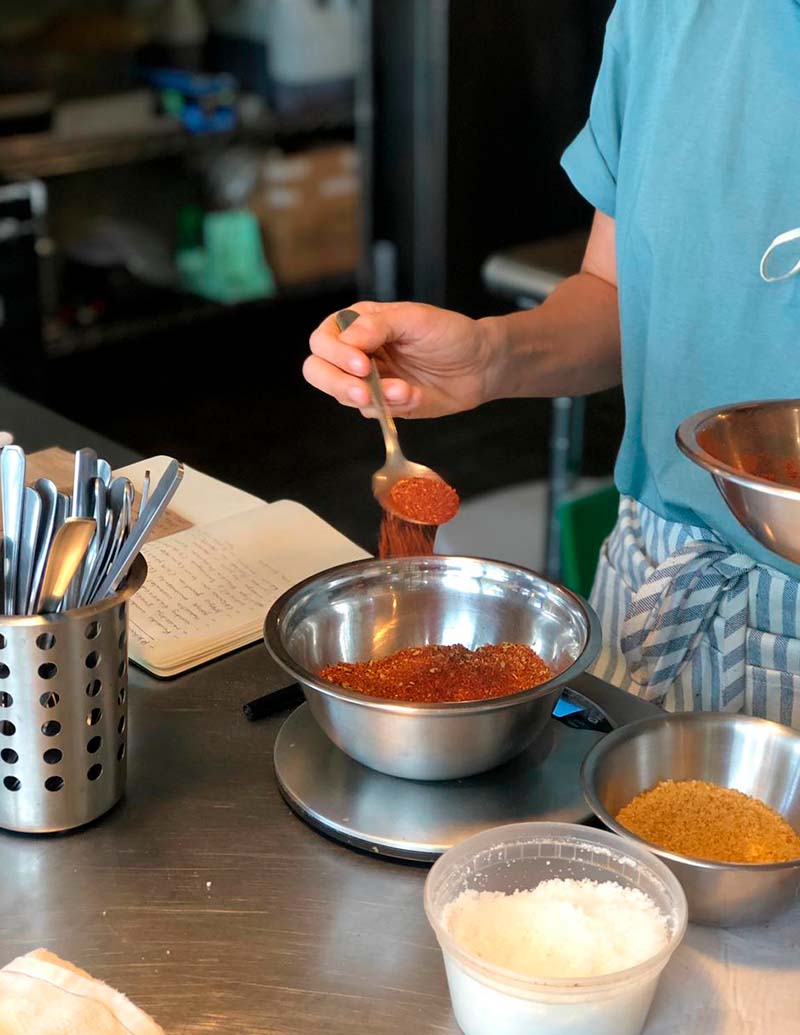
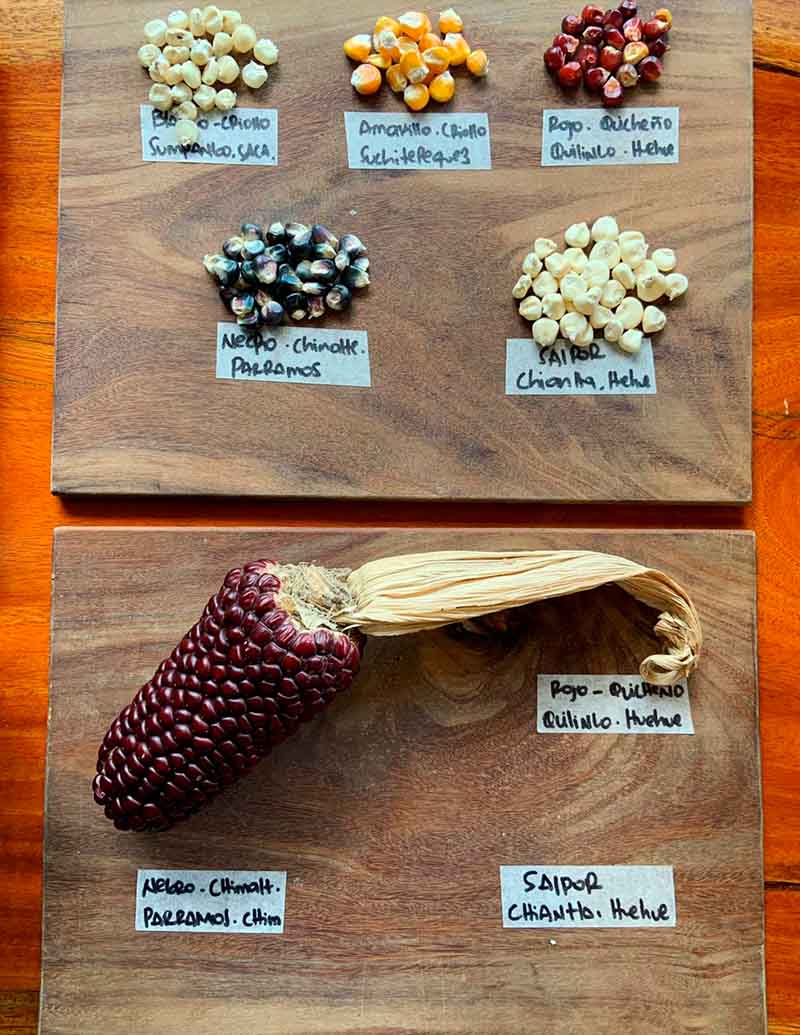
LATINNESS: We know you’re on a mission to educate and recently founded the Diacá Studio, a sensory laboratory. Tell us more about this and the projects you’re working on from here.
DEBORA: Diacá Studio launched during the pandemic. We’d been working on it behind closed doors for over 11 years.
How does it work? It’s a thorough analysis of 100% of the ingredients that enter the restaurant, but there’s a backstory as to why. I was really looking for it to be a tool that allowed the consumer to know what their ingredient tastes like and how we use it in the kitchen, and, furthermore, for the producer to understand what he was producing.
The Diacá Studio receives ingredients. Sometimes they arrive because the producer has a surplus and no longer knows what to do with it because he couldn’t sell it. We test it, figure out what to do with it, prepare it and deliver it to you. We don’t charge for executing, nor for the sensory advice; basically all we do is prepare and send it back so they can sell it as a product. If it doesn’t sell, well, we’ll take care of it.
We started with something of our own, maicitos, something people eat every day. No one would ever think of corn tasting.
LATINNESS: Like a wine tasting?
DEBORA: Like when you try coffee or wine. When you try it and assimilate it, you might say: “No, it can’t be! It tastes like plum.” Since it’s something you eat daily, you don’t stop and realize that it’s something extraordinary.
Before this interview, I had a meeting with Rafa Mier, who’s a corn researcher. We were talking about popcorn or poporeperos, as we call them, cotufas or crispetas, as they’re called in other countries. It’s impressive that as human beings we don’t know that poporopo or popcorn was the first aroma to which America was linked. We ate popcorn before eating tamales, so that toastiness or crispiness is something that makes our mouths water just thinking about it. Why? Because it was the first on this continent, one of the first aromas and flavors we had.
How is it possible that we have it in theaters, at home, we put it in the microwave and that’s it? We don’t consider that it comes from a milpa, and this, in turn, from corn, a plant that’s thousands of years old and was domesticated in a way by our farmers.
The first farmers were Chinese and then Mesoamericans. It was in America. This is what the Diacá Studio does– bring to light all of these notes and flavors from our daily lives so that, instead of tasting the finest wines or the most spectacular coffees, we experience tastings with common things that are very much ours, from corn to chiles, peppers, onions, mushrooms… Things from our day to day, that we don’t give value to.
The Diacá Studio is just that– an in-depth study of the sensory anatomy of an ingredient.
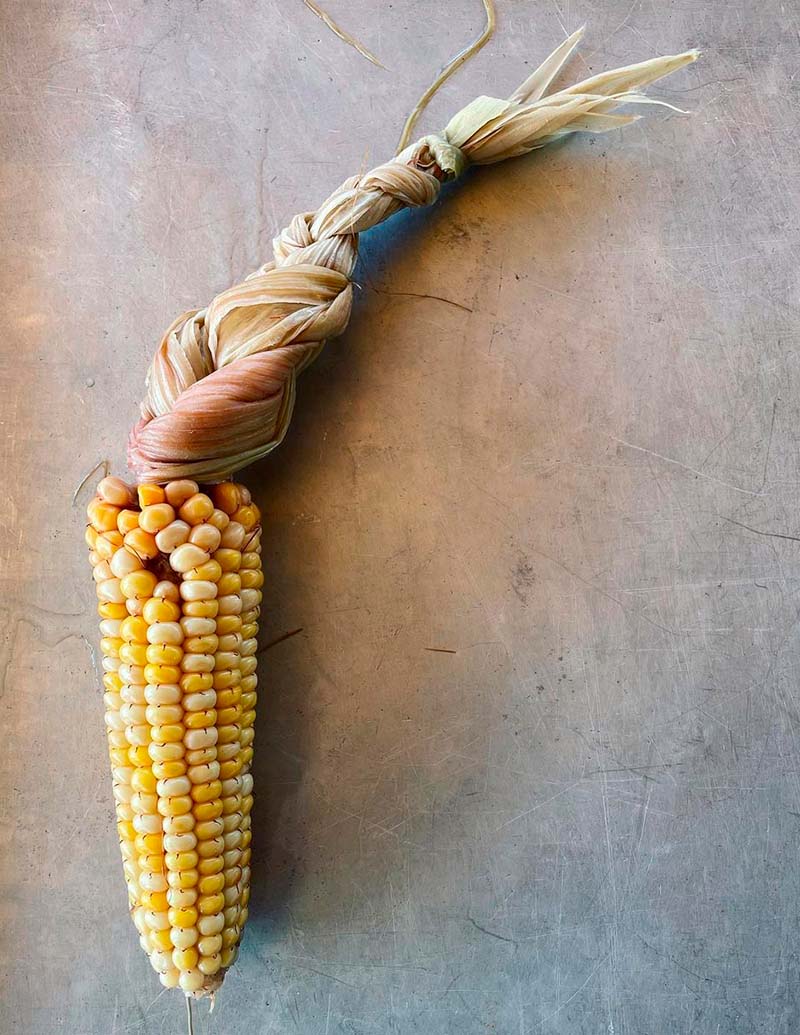
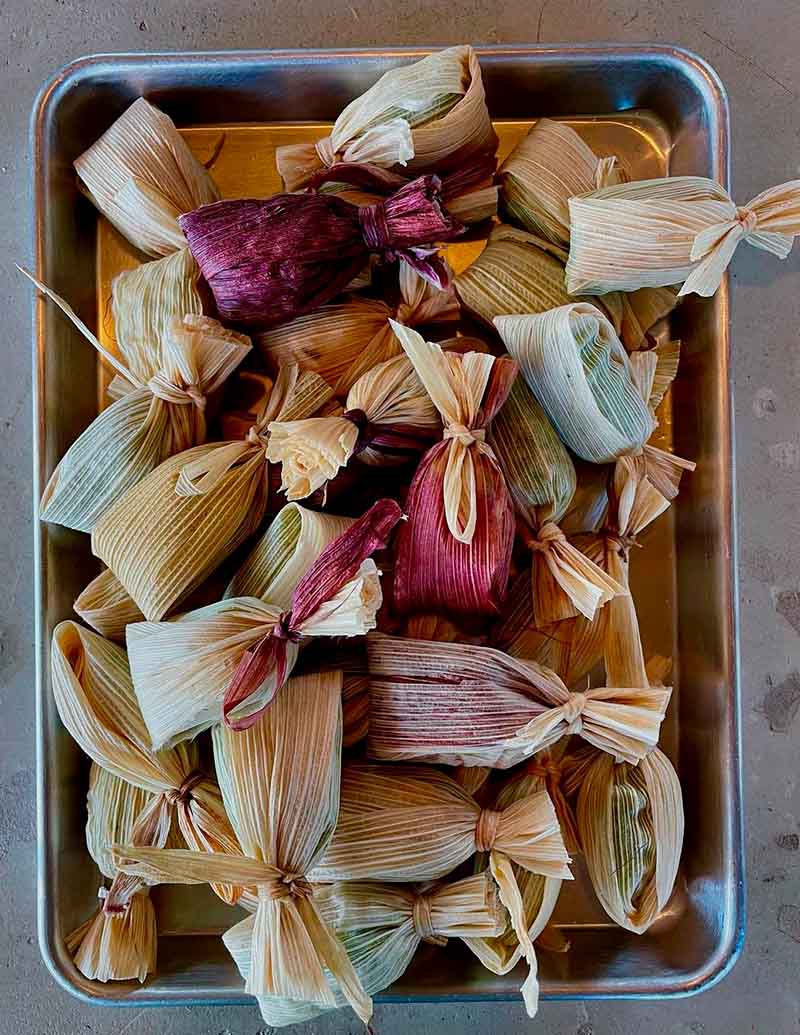
LATINNESS: Is there an ingredient or specific flavor that defines your country?
DEBORA: Yes, of course. There are many things, which, being so close to Mexico and El Salvador, are not known, starting with the pepitoria or pumpkin seed; a gourd specific to Guatemala.
The Mexican version is completely different from the Guatemalan one. So is the Salvadoran version, because the variety of climates and soils make them different.
We also have cobanero or chiltepe, flavors that, to me, really represent Guatemala because they don’t exist elsewhere. The other is beans. We have so many varieties, and so many ways to prepare them: flipped, strained, blended.
Finally, the tortilla. In fact, the Mexican tortilla is very different from the Guatemalan. In Guatemala, a lot are still fried by hand. There are so many mills, and that’s what we talk about with Rafa Mier. His Tortilla Foundation does a spectacular job in Mexico.
I can tell you that the tortilla, the chiltepe, the cobanero, the chipilín and the pepitoria are very Guatemalan flavors.
LATINNESS: Is there something that people don’t know about Guatemala?
DEBORA: There are so many things! For example, if I asked you to name the three countries with the greatest diversity of fungi in the world, what would you guess?
LATINNESS: Somewhere in Asia?
DEBORA: The three countries with the greatest diversity of fungi in the world are China, Mexico and Guatemala. In fact, many mycologists come here to investigate them, especially the relationship the Mayans have with fungi.
There is no other culture that’s had such an intimate connection with mushrooms and more in a medicinal manner. There’s something that archaeologists and anthropologists still don’t understand, which is where they come from and what they are, but throughout the country you will find stone sculptures of mushroom heads. That’s why the Mayans were called mushroom heads .
Furthermore, Guatemala is the largest exporter of many things, many that are not even endemic to this country. For example, snow peas, sesame and black lemon. Guatemalan salt is highly valued in the world. That’s another thing you might also say “Come on, really?”
Allspice is Mesoamerican. It’s specifically from the Yucatán and Petén area in Guatemala.” When you think of the seven families of peppers that exist in the world, one of them is American and comes from the area of Mexico and Guatemala.
The same with chewing gum, which comes from Petén. Guatemala was the largest exporter of natural chewing gum for a long time until China invented the synthetic version, and the industry ended there in the 1950s. It’s a tree from the same family as latex.
I have a spectacular book of 600 generals who came from 1650 to 1700 to investigate the 300 medicinal herbs that we had because Guatemala has one of the most important ancestral traditional medicines on the continent; also natural.
In other words, there are many things to tell and depend a lot on the area. For example, there’s a clay that only develops in Chinauta. It’s white and they used it to make vessels for royals. They were intact when they found them. It’s like the black mud of Oaxaca.
Also, the nixtamal. When people talk about corn, they don’t understand that nixtamal is something that’s still being made. Not to mention the 23 languages that are still in force. It’s an endless story of wealth that includes art, writing, music, cooking and even film.
We’d never finish the interview with everything there is to tell about Guatemala that people do not know.
Images courtesy of Debora Fadul.


